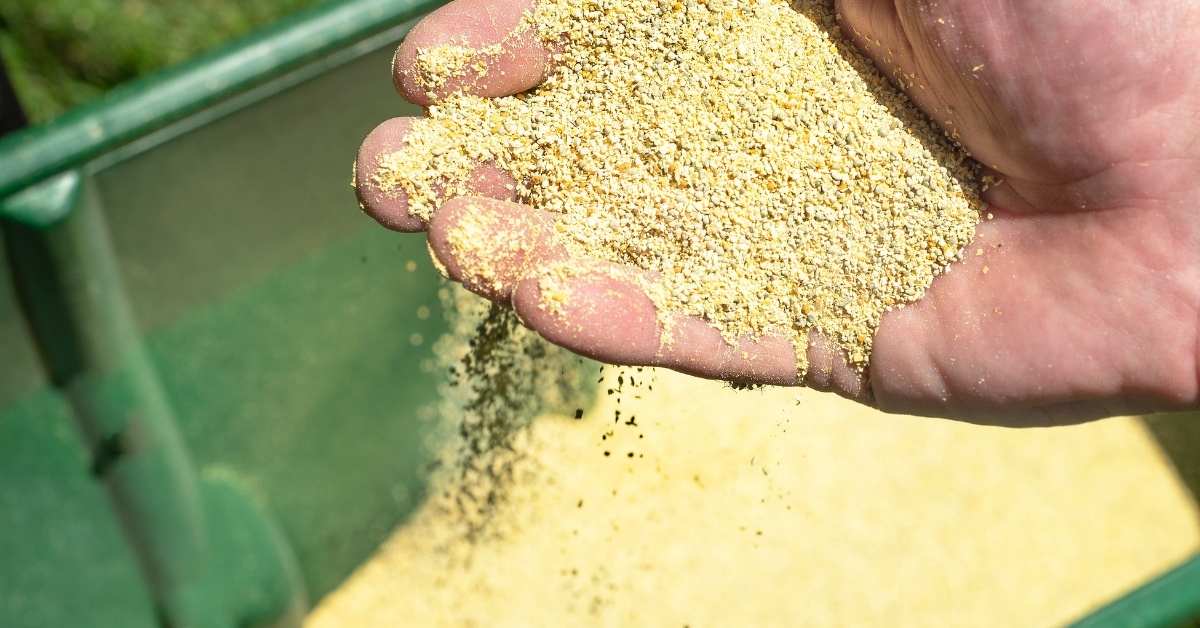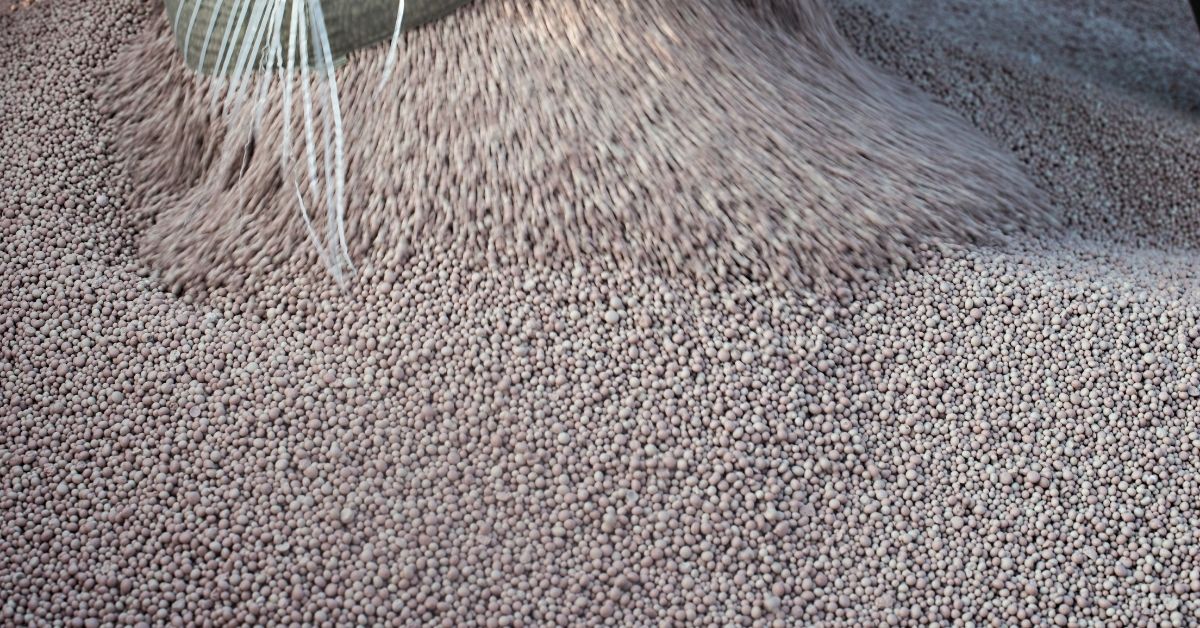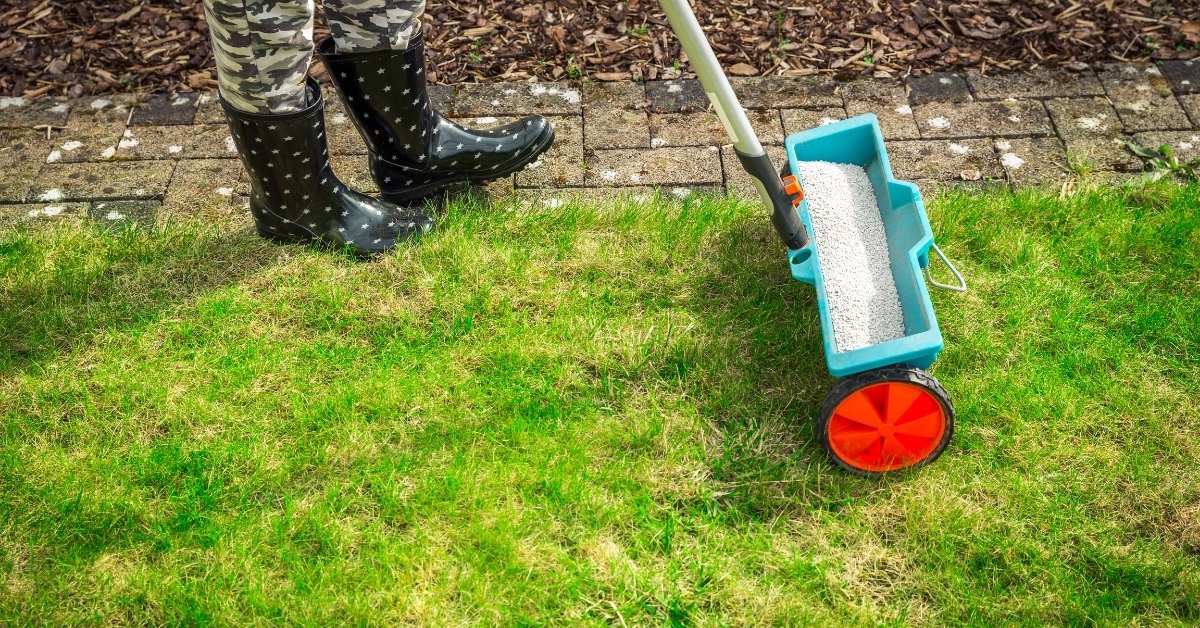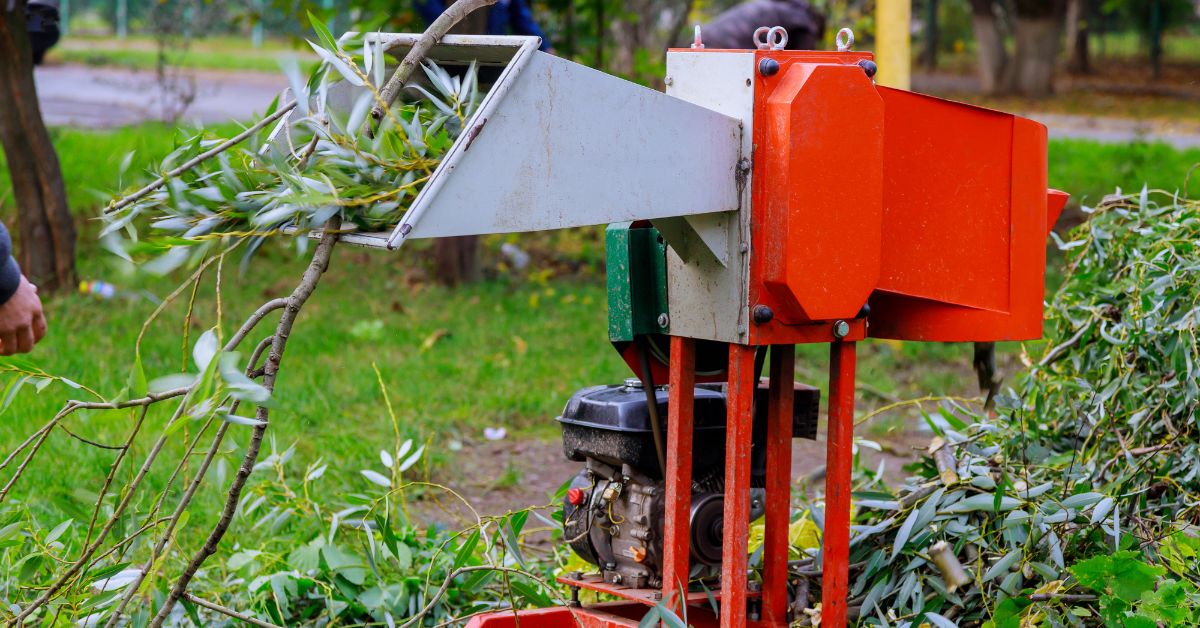Fertilizing lawn areas is one way to make sure your lawn stays healthy. For your lawn to remain healthy, it needs occasional help from you and from Mother Nature. It needs enough water to grow, enough sun to produce energy, and enough oxygen to breathe.
If the processes of your soil don’t provide enough of these and the other nutrients needed, you need to help your yard along. Fertilizing lawn areas add the required nutrients in the proper amounts at the correct time to help your lawn stay healthy and lush.
Required nutrients in lawn fertilization
Your lawn needs a series of nutrients to thrive and a nitrogen supply that will help promote growth and color in your lawn. If your lawn gets too little nitrogen, your grass will grow more slowly and be more prone to disease, thin turf, and yellowing plants.
If your grass gets too much nitrogen, it can lead to low carbohydrate reserves, reduced root growth, and excessive leaf and shoot growth. Nitrogen occurs in the soil due to the decomposition of plant roots, lawn clippings, and other materials. Generally, the amount provided by natural sources is not enough to maintain the growth level you want in your lawn. So you may need to use a nitrogen fertilizer.

Before applying nitrogen fertilizer to your lawn, you must first assess how much nitrogen is currently present in your soil and how much more your grass need. Then you can purchase the level of fertilization that your lawn requires. You will also need to determine whether you want to use a quick or slow-release type of nitrogen fertilizer.
Phosphorus is a crucial element for fertilizing lawn areas
Another essential element in your soil is phosphorous. It is vital to the growth of healthy roots. Erosion and runoff can wash the phosphorous from your soil, and you will need more fertilizing, lawn experts agree, to add phosphorous to your lawn.
It is actually better to add phosphorous to your soil before you plant, but if your lawn is already established, it can still be added then. Your local extension office can test your soil, usually for free.
Potassium is also an essential element in fertilizing lawn areas because it helps plant components’ synthesis. A lack of potassium can lead to diseases of turfgrasses and a reduced tolerance by grasses to stresses in the environment.
After you have your soil checked, you will need to find the right fertilizer products to balance the amount of nitrogen, phosphorous, and potassium in your lawn. Fertilizers have different values of all these and other essential nutrients, so your garden center expert should be able to help you find the right product for your lawn.
Balancing the necessary elements in your soil will help your grass to grow healthy and be hardy. Fertilizing lawn areas near your home will help give your grass that shows a home look.
Understanding the Role of Micro and Secondary Nutrients in Lawn Health
While Nitrogen, Phosphorus, and Potassium (also known as NPK) are vital for your lawn, they are not the only nutrients required. Micro and secondary nutrients like Iron, Magnesium, Sulfur, Zinc, Copper, Molybdenum, and Boron also play crucial roles in overall plant health. These nutrients ensure robust lawn growth and color, contributing to photosynthesis, enzyme function, and protein production.
Iron, for instance, is critical for the chlorophyll synthesis that gives your lawn its lush green hue. Similarly, Magnesium, a component of the chlorophyll molecule, enhances photosynthesis, the process by which plants convert sunlight into energy.
Even though these nutrients are required in relatively smaller quantities compared to NPK, a deficiency could lead to weak, discolored grass and increased susceptibility to disease and pest attack. Regular soil testing can help identify and correct any deficiencies in these micro and secondary nutrients, ensuring your lawn stays green, lush, and healthy.
Optimizing Soil pH for Effective Fertilization
The pH level of your soil, a measure of its acidity or alkalinity, plays a crucial role in nutrient availability for plant absorption. Most turfgrasses prefer a slightly acidic to neutral pH range (6.0 to 7.0). This range facilitates optimal nutrient uptake, enhancing the effectiveness of your fertilization efforts.
If your soil pH is too high (alkaline) or too low (acidic), it can restrict the availability of essential nutrients, creating a sort of “nutrient lockout.” For instance, iron becomes less available to plants in alkaline soils, which can lead to iron deficiency and a condition called chlorosis, where grass blades turn yellow.
Lime can be used to raise pH in acidic soils, and sulfur can lower pH in alkaline soils. A professional soil test can provide precise recommendations on how many of these amendments your lawn may need.
Choosing the Right Fertilizer Application Method
The method of fertilizer application can greatly impact the efficiency of nutrient delivery to your lawn. There are several ways to apply fertilizer, and each method has its advantages and disadvantages.
Broadcast spreaders, for example, can cover large areas quickly, making them ideal for large lawns. However, they might not distribute fertilizer evenly near the edges, potentially leading to under-fertilization in these areas.
Drop spreaders, on the other hand, provide precise control, making them suitable for smaller lawns or areas near water bodies where runoff could be a concern. Handheld spreaders are ideal for very small lawns or hard-to-reach spots.
Choosing the Right Type of Fertilizer for Your Lawn
Different types of fertilizers have different effects on your lawn. The most common types are granular, liquid, organic, and synthetic. Granular fertilizers are easy to apply and provide a slow release of nutrients over time. Liquid fertilizers are fast-acting and can be sprayed directly on the grass blades. Organic fertilizers are derived from natural sources such as manure, compost, or seaweed.
They improve the soil quality and provide a balanced mix of nutrients. Synthetic fertilizers are made from chemicals and can provide a quick boost of nitrogen, phosphorus, or potassium. However, they can also harm the soil and the environment if used excessively or improperly.

Avoiding Common Mistakes When Fertilizing Your Lawn
Fertilizing your lawn can be beneficial, but it can also cause problems if done incorrectly. Some of the common mistakes to avoid are:
- Applying fertilizer in hot, humid weather. This can cause the fertilizer to burn the grass or evaporate before reaching the soil.
- Applying fertilizer near water features, on hard surfaces, or on frozen ground. This can cause runoff and pollution of water sources.
- Using phosphorus unless your soil test indicates a deficiency. Phosphorus can accumulate in the soil and cause algae blooms in nearby water bodies.
- Applying more than four times a year. This can lead to excessive growth, disease, and nutrient imbalance.
- Using liquid fertilizers on your lawn. Liquid fertilizers are more suitable for plants in containers or gardens. They can wash away quickly and unevenly on lawns.
Benefits of Fertilizing Your Lawn Regularly
Fertilizing your lawn regularly can provide many benefits for your grass and your home. Some of them are:
- Enhancing the color and appearance of your lawn. Fertilizer can help your grass stay green and lush throughout the year.
- Improving the health and resilience of your lawn. Fertilizer can help your grass grow stronger roots, resist diseases and pests, and cope with stress from heat, drought, or traffic.
- Increasing the value and curb appeal of your home. A well-fertilized lawn can make your home look more attractive and inviting to potential buyers or visitors.
- Contributing to environmental health and sustainability. A well-fertilized lawn can sequester carbon dioxide, produce oxygen, filter pollutants, prevent erosion, and support wildlife.
Understanding the Impact of Fertilizing Timing and Frequency
Fertilizing timing and fertilizing frequency are important aspects of a successful fertilization program. Generally, lawns need fertilizing a few times a year, often in spring and fall. However, the ideal timing and frequency can depend on your local climate, soil type, and grass species.
For instance, cool-season grasses like Kentucky bluegrass and tall fescue typically require fertilization in early spring and late fall, while warm-season grasses like Bermuda and St. Augustine grasses benefit from fertilizing in late spring to early summer.
While nitrogen-based fertilizers encourage grass growth, frequent application can deplete soil nutrient reserves and lead to excessive leaf growth at the expense of root development. It’s crucial to strike a balance that encourages both top growth and deep-root development for a resilient lawn.
By following these tips and ensuring the right balance of essential nutrients, you can create a lush, healthy lawn that not only adds curb appeal but also contributes to environmental health by sequestering carbon and supporting local ecosystems.
Conclusion
Fertilizing lawn areas is a vital practice that can enhance the beauty, health, and value of your grass. However, it requires careful planning and execution to achieve the best results. You need to know your grass type, soil pH, and nutrient needs, as well as the right type of fertilizer, application method, timing, and frequency. By following these tips and avoiding common mistakes, you can create a lawn that not only looks great but also contributes to the environment and your well-being.
FAQ
What is the best time of day to fertilize your lawn?
The best time of day to fertilize your lawn is either in the early morning or late afternoon/early evening. This is because the temperature is cooler, and the grass is more likely to absorb the nutrients without losing them to evaporation or runoff. Avoid fertilizing your lawn in the middle of the day when the sun is hot and bright, as this can cause the fertilizer to burn the grass or wash away before reaching the soil.
How do I know what type of grass I have and what type of fertilizer it needs?
The type of grass you have depends on your location and climate. Generally, there are two main types of grasses: cool-season and warm-season. Cool-season grasses grow best in the northern regions of the US and prefer temperatures between 60 to 70 degrees F.
Warm-season grasses grow best in the southern regions of the US and prefer temperatures between 75 to 85 degrees F. You can identify your grass type by looking at its color, texture, shape, and growth pattern. You can also ask your neighbors who have similar lawns or take a sample to your local garden center for identification.
The type of fertilizer you need depends on your grass type, soil pH, and nutrient needs. You can test your soil pH with a kit from a garden store or online or send a sample to a soil testing lab or your local agriculture extension.
The ideal pH range for most grasses is between 6.0 and 7.0. If your soil pH is too high or too low, you may need to add lime or sulfur to adjust it. You can also check the nutrient levels of your soil with a test kit or a lab analysis.
The most important nutrients for your lawn are nitrogen (N), phosphorus (P), and potassium (K). These are usually indicated by three numbers on the fertilizer bag, such as 32-0-4. The higher the number, the more concentrated the nutrient is in the fertilizer. You should choose a fertilizer that matches your grass type and soil needs.
How often should I fertilize my lawn, and how much should I apply?
The frequency and amount of fertilizing your lawn depends on several factors, such as your grass type, climate, soil quality, and lawn goals. Generally, you should fertilize your lawn two to four times a year, depending on how fast your grass grows and how much you want to improve its appearance and health.
For cool-season grasses, you should fertilize in early spring, late spring, and fall. For warm-season grasses, you should fertilize in late spring, early summer, and early fall. You should avoid fertilizing in winter when the grass is dormant or in summer when it is stressed by heat or drought. The amount of fertilizer you should apply depends on the product you are using and the size of your lawn.
You should follow the instructions on the fertilizer label carefully and use a spreader to ensure even distribution. A general rule of thumb is to apply no more than one pound of nitrogen per 1,000 square feet of lawn per application. Applying too much fertilizer can harm your lawn and the environment by causing nutrient runoff, burning the grass, or stimulating excessive growth that requires more mowing and watering.



Love it! Hydroseeding requires less watering, which saves money on water usage. During spraying, the solution must be maintained wet at all moments for the first two weeks.